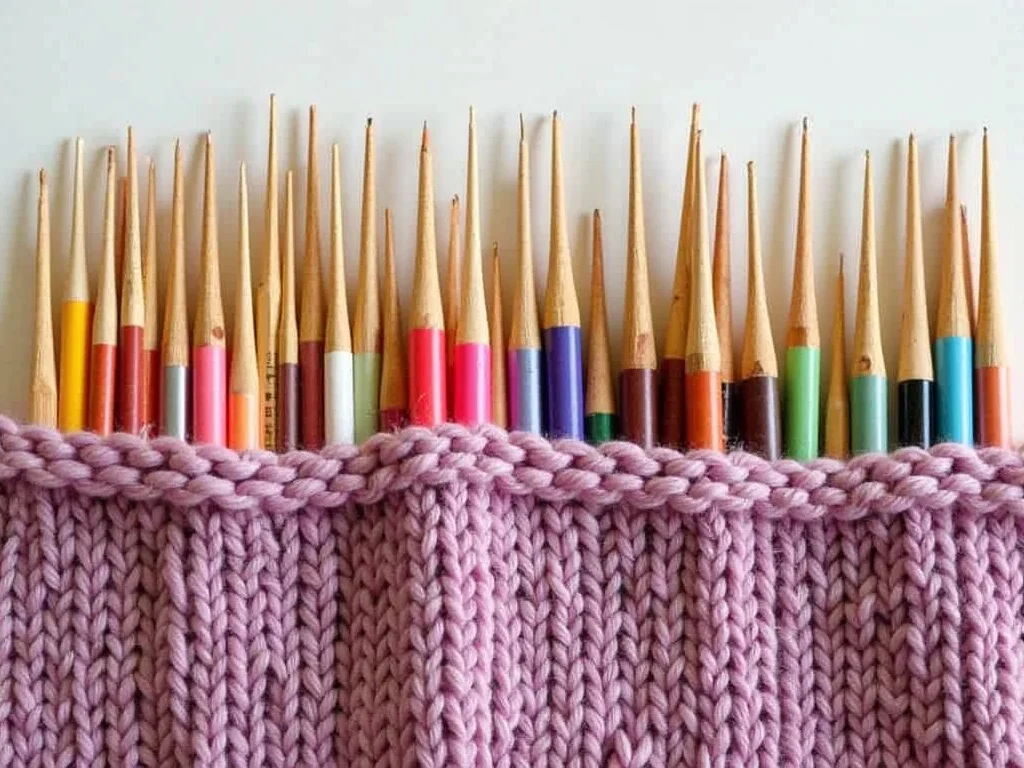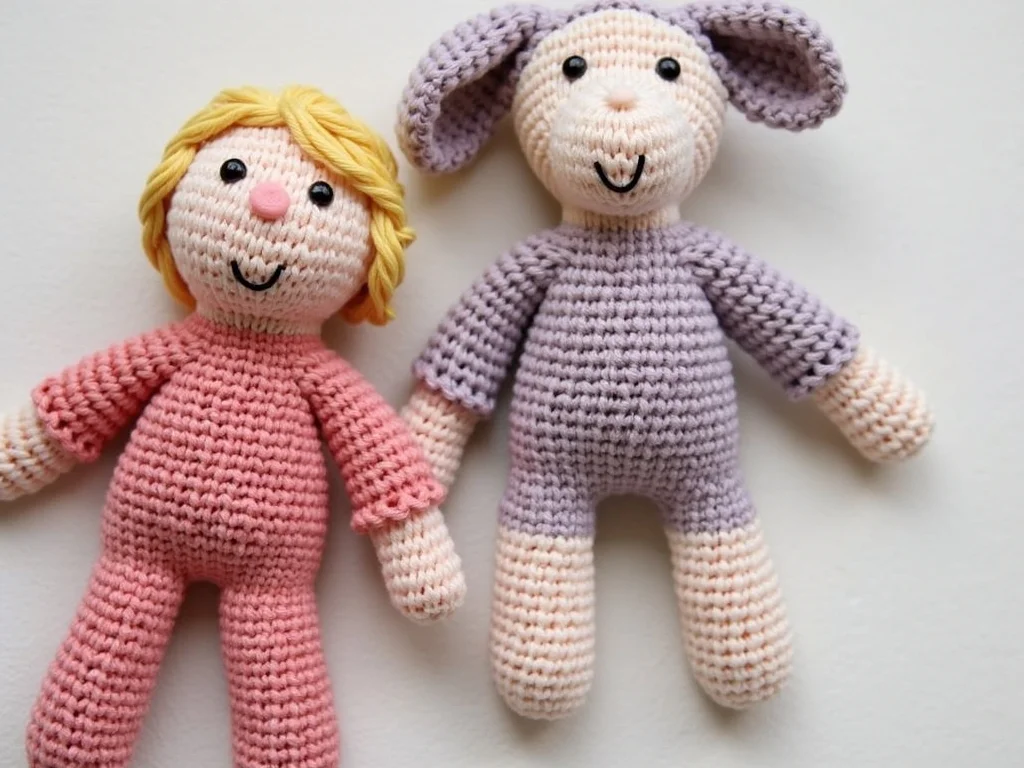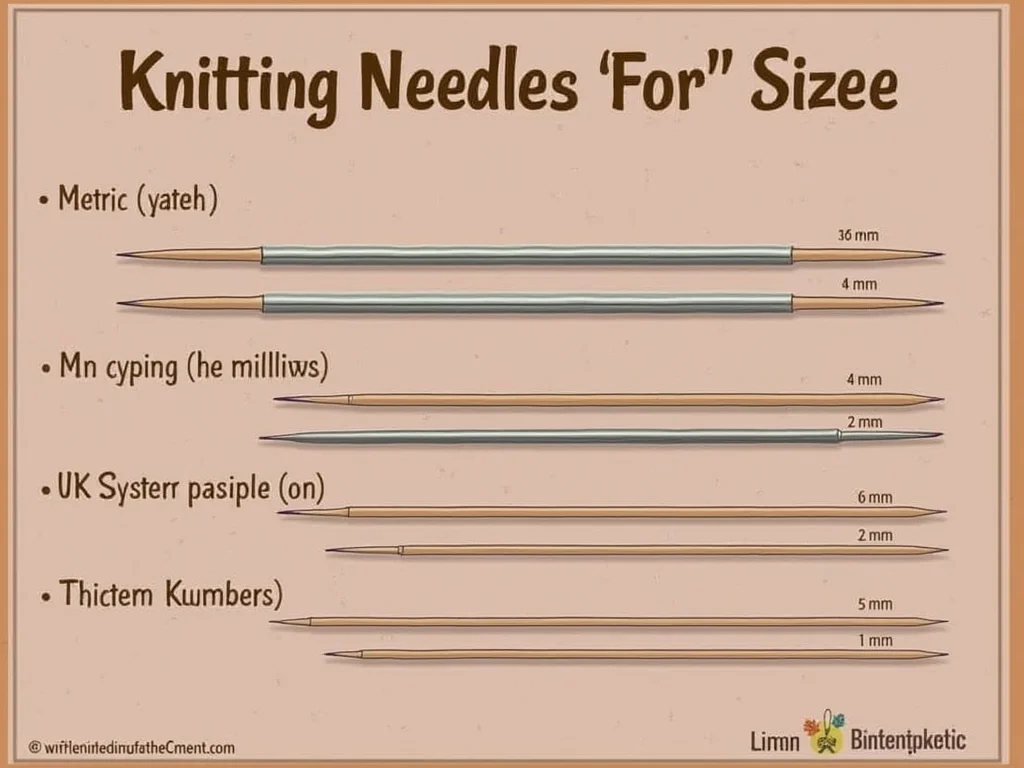Ah, knitting needles – the trusty tools that turn yarn into beautiful creations. But with a vast array of sizes available, choosing the right one can feel daunting, especially for new knitters. Fear not! This comprehensive guide will unveil the mysteries of knitting needle sizes, equipping you to tackle any project with confidence.
Understanding the Knitting Needle Size Chart
Knitting needles are sized according to their diameter, with three main numbering systems used globally:
- Metric System (mm): This system uses millimeters (mm) to denote needle diameter. For example, a 4mm needle has a diameter of 4 millimeters.
- US System (sizes): US sizes are denoted by numbers, with larger numbers indicating thicker needles. Don’t be confused by the lack of millimeters – a conversion chart is your best friend here!
- UK System (numbers): Similar to the US system, UK sizes use numbers with larger numbers corresponding to thicker needles. Again, a conversion chart is crucial.
Luckily, you don’t have to memorize all three! Most knitting patterns and yarn labels will specify the recommended needle size in at least one system, often with conversions provided.
The Yarn & Needle Size Relationship
The magic of knitting needles lies in their relationship with yarn weight. Here’s a general guideline:
- Thinner Yarns (Fingering, Sock): These delicate yarns require fine needles, typically ranging from 2.25mm to 3.75mm (US size 1 to 5). They result in dense, intricate fabrics perfect for socks, lace shawls, and baby garments.
- Medium Yarns (DK, Worsted): The workhorse of the yarn world, DK and worsted weights thrive on needles between 3.75mm and 5.5mm (US size 5 to 9). They produce versatile fabrics ideal for sweaters, hats, and blankets.
- Bulky Yarns (Bulky, Super Bulky): Calling for chunkier needles (5.5mm to 12.75mm; US size 9 to 17), bulky yarns create cozy, textured fabrics for sweaters, scarves, and fast-knitted projects.
Remember, this is just a starting point! The ideal needle size also depends on the desired fabric look. A tighter knit fabric uses a smaller needle size than recommended, while a looser, drapier fabric calls for a larger size.

The Importance of Gauge
Gauge refers to the number of stitches and rows in a specific area of your knitting. It’s crucial to achieve the intended size and drape of your project. Here’s where the magic happens:
- Pattern Gauge: Knitting patterns specify a gauge using stitch and row count over a specific area (e.g., 4 stitches and 5 rows per inch).
- Swatch Gauge: Before diving into your project, knit a swatch using the recommended yarn and needle size. Measure the stitch and row count over the specified area.
- Needle Size Adjustment: If your swatch gauge doesn’t match the pattern gauge, adjust your needle size! Go down a size for a tighter gauge or up a size for a looser gauge.
Tip: Always knit a gauge swatch before starting your project! It’s a small investment of time that can save you from frogging (tedious ripping out) later.
Beyond the Chart: Material Matters
While size is key, knitting needle material also plays a role:
- Metal Needles: Provide a smooth, fast glide for experienced knitters.
- Plastic Needles: Lightweight and affordable, ideal for beginners.
- Wooden Needles: Warm to the touch and offer good stitch grip, perfect for those who knit tightly.
- Bamboo Needles: Eco-friendly, lightweight, and offer a nice stitch grip.
Choose the material that feels most comfortable in your hands and suits your knitting style.

Conclusion
With this guide as your compass, navigating the world of knitting needle sizes becomes a breeze. Remember, practice makes perfect! Experiment with different yarns and needle sizes to discover your knitting sweet spot. Happy stitching!

